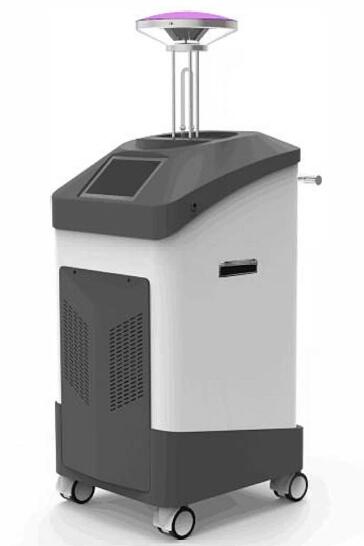Pulsed Strong Light Disinfection,Pulse UV Disinfection Robot
We manufactured several samples for customers. If you are interested, we accept the custom design in the researching.

Pulsed strong light disinfection device releases extremely high electric energy in a very short period of time through light, instantly destroying the microbial cell wall and nucleic acid structure, thus killing the microorganisms on the object surface, while generating ozone (O3) and hydrogen oxide (H2O2) in the air to achieve sterilization effect, suitable for any traditional disinfection using ultraviolet mercury lamp.
It has a wider spectrum range of 200nm-1100nm, close to the sunlight, but the instantaneous light power can reach 10 million times of the sunlight power, so this fungicide robot can be used to quickly kill infectious bacteria or viral situations.
This Pulsed Strong Light Disinfection device can be used for rapid disinfection appliction for indoor rooms, classrooms, offices, workshops, hotel halls and other places. After adding the automatic walking function design, for an office of about 100m2, it can effectively kill all kinds of indoor bacteria (including superviruses) in 5 minutes.What’s more,some evidences said it can kill the COVID-19 virus. At the same time, it can be applied to medical and health care, food industry, sewage treatment and other fields.
The pulsed strong light comparing with the traditional ultraviolet light
♠1. Photosynthesis (ultraviolet sterilization)
Photochemistry is the optical reaction generated when microorganisms receive light irradiation at a specific wavelength. Dual-spiral genetic information in microbes forms partial isomers of mesodiazrous and mesodiazrous miscellaneous benzene when exposed to ultraviolet light. The substance blocks the bacteria’s own metabolism and can cause genetic problems until death.
Photochemistry is the main sterilization mechanism of the traditional ultraviolet light. Pulsed strong light(200-1000nm) also covers ultraviolet band(10~380 nm), pulse strong light also has photosterilization mechanism. However, this mechanism only plays an auxiliary role in pulsed strong light. For mold and spores, ultraviolet light is difficult to penetrate the dense cell wall structure, and DNA substances can not absorb ultraviolet light, so the sterilization efficiency is very low.
♠2. Photothermal action (pulse strong photosterilization)
Photothermal action refers to the temperature rise after the light energy is absorbed by the matter. When the microorganism is subjected to pulse intense light at close range, due to the large amount of light energy absorbed in a short time, the microbial surface temperature will rise sharply, and the surface structure will be completely destroyed and die.
Because the whole photothermal process is very short, the irradiated object does not produce a temperature rise, and basically does not have an impact on the nutrients. According to the photothermal sterilization mechanism, the pulse strong light can very effectively kill all microorganisms.
♠3. Compared with the traditional sterilization method, pulsed bright light sterilization technology has the following advantages
1) Broad spectrum: pulse strong light to kill all microorganisms
2) Efficient: It takes only one pulse to achieve an kill rate of more than log-6 for black cyclomycin spores
3) Environmental protection: pulse strong light equipment no residue, no three waste, no mercury and other pollutants
4) Flexible: pulse strong light can flexibly adjust the frequency of flicker, scintillation intensity, Suitable for different production lines
5) No temperature rise: sterilized objects produce almost no temperature rise, Cold sterilization technology
6) Pulsed bright light has little effect on the nutritional content of food, and studies have shown that pulsed bright light does not cause significant damage to fat, L tyrosine, glucose, starch and vitamin c.
Parameters
Type:BL/ZW101
Size:450mm*550mm*1000mm
Weight:63kg
Power voltage:Single phase ,220V
Power:Standby < 50W and a maximum of 1KW when working
Light tube: 1pcs
Waves of the pulse light:200nm~1000nm
Frequency of the pulse light:Max 2HZ
Related Items

